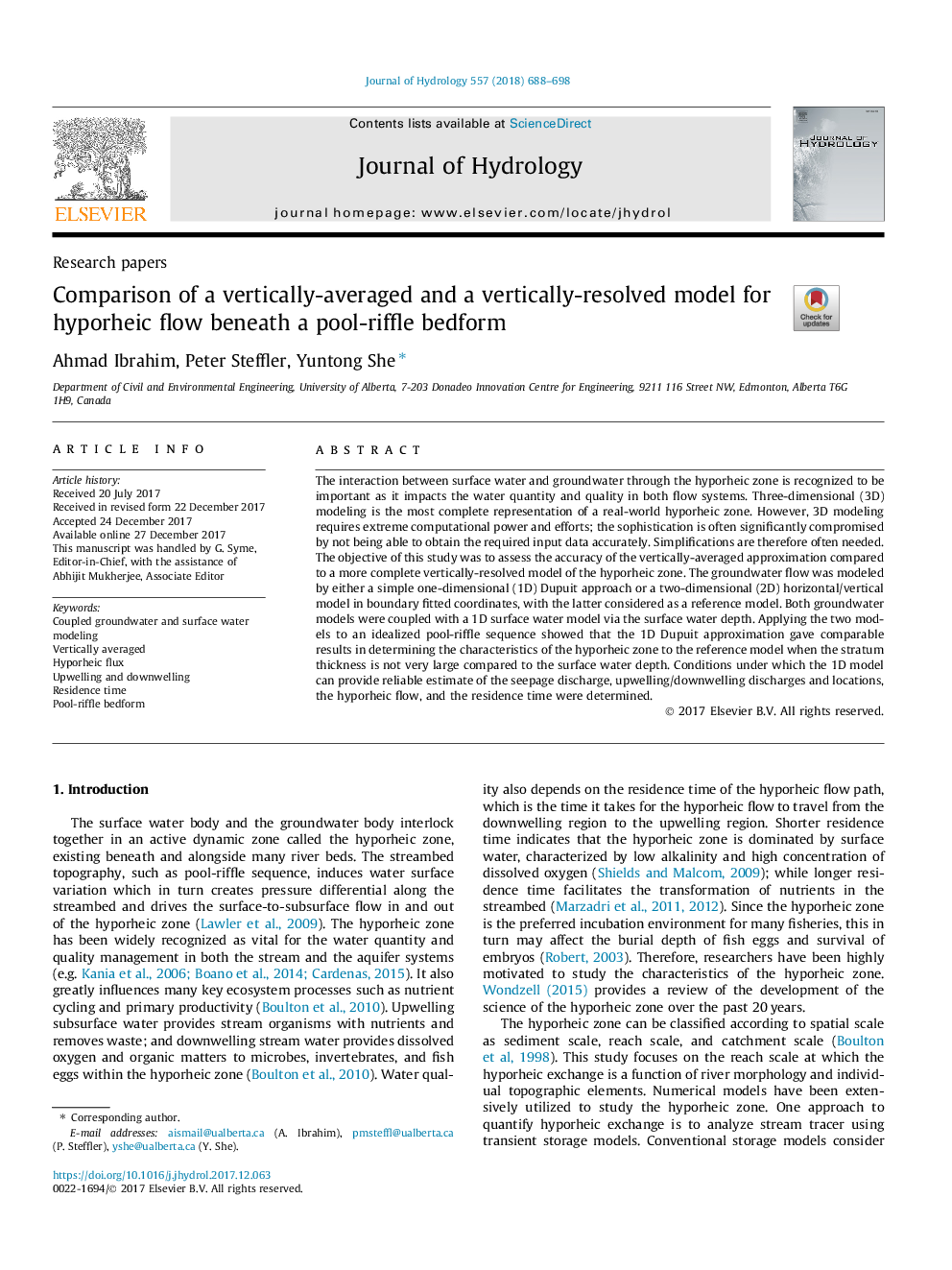| Article ID | Journal | Published Year | Pages | File Type |
|---|---|---|---|---|
| 8895063 | Journal of Hydrology | 2018 | 11 Pages |
Abstract
The interaction between surface water and groundwater through the hyporheic zone is recognized to be important as it impacts the water quantity and quality in both flow systems. Three-dimensional (3D) modeling is the most complete representation of a real-world hyporheic zone. However, 3D modeling requires extreme computational power and efforts; the sophistication is often significantly compromised by not being able to obtain the required input data accurately. Simplifications are therefore often needed. The objective of this study was to assess the accuracy of the vertically-averaged approximation compared to a more complete vertically-resolved model of the hyporheic zone. The groundwater flow was modeled by either a simple one-dimensional (1D) Dupuit approach or a two-dimensional (2D) horizontal/vertical model in boundary fitted coordinates, with the latter considered as a reference model. Both groundwater models were coupled with a 1D surface water model via the surface water depth. Applying the two models to an idealized pool-riffle sequence showed that the 1D Dupuit approximation gave comparable results in determining the characteristics of the hyporheic zone to the reference model when the stratum thickness is not very large compared to the surface water depth. Conditions under which the 1D model can provide reliable estimate of the seepage discharge, upwelling/downwelling discharges and locations, the hyporheic flow, and the residence time were determined.
Keywords
Related Topics
Physical Sciences and Engineering
Earth and Planetary Sciences
Earth-Surface Processes
Authors
Ahmad Ibrahim, Peter Steffler, Yuntong She,
